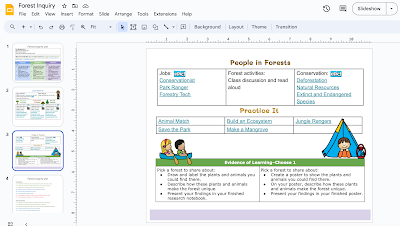Lesson Planning for Inquiry-Based Learning
Hey, y’all! The last few weeks, we’ve done a deep dive into what inquiry-based learning looks like, how it’s connected to phenomenon-based learning, types of inquiry-based learning lessons, and long-term planning of inquiry units. This week, we’re going to be looking at lesson planning for larger inquiry-based learning units.I have to be honest with you. Those detailed lesson plans we did in college aren’t anywhere close to what I use to teach an inquiry-based or phenomenon-based learning unit. I just don’t. So, I’m sorry I don’t have a template for you. But I do have a planning guide that will get you started in planning your own units.
The first thing I do, after we’ve picked a topic, is look at the standards that can be addressed in this unit. It looks a little something like this:
This is basically a brainstorming step. I include everything I can possibly think of that would work with this unit. I’ll weed things out later.
Then, I look at students’ questions and decide which ones I can address in this unit. Topics are generally chosen based on students’ questions and interests so there are usually plenty of questions I work into these units.
Once I’ve sorted all that, I go through and organize things by related ideas and where they fit in with our current reading or math units. This can get tricky but is totally doable.
It’s at this point, I start planning lessons. I teach first, so our inquiry-based lessons are largely guided. We’ll all pretty much be learning about the same things on the same day. Some lessons might be with hands-on manipulatives, others might be online through Google Classroom™, and others may be more puzzle-based. It just depends on the topic.
For online lessons, I typically make a digital learning plan in Google Classroom™ and the students work through the day’s topic on their own, either during reading or science. I create the learning plan in Google Slides so it’s easy to manipulate and assign it as a material so I can edit it as we go. I put a rectangle shape over what I don’t what them accessing yet (first graders like to click things!) so I have some control over what it is we’re talking about each day. The kids love seeing new things open up in their learning plans and get so excited to access the new material.
Creating the digital learning plan basically outlines the lesson for me in my lesson plan. When the kids are exploring temperate forests, that’s all my lesson plan says, plus maybe a few notes of things I want to ask them to think about as they’re exploring.
If you have an admin that does require these kinds of lesson plans, I suggest looking into the 5E model if you have to formally write something up. It’s not exactly a match for every unit, but it’s a great place to start.
Up next, we’ll be sharing what the lesson structure looks like for our inquiry-based and phenomenon-based learning units. This is where you become more of a coach or guide than a lecturer or direct-teach instructor. This is where you see your kids become critical thinkers, and it’s AWESOME!
Thanks for stopping by and have a wonderful week. I’ll talk to you soon.
Stay cozy,









No comments
Post a Comment